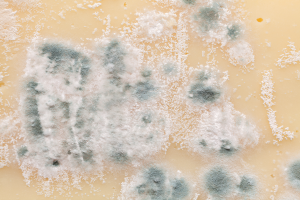 Everyone has had the unfortunate experience of throwing out spoiled food. It’s a sad experience that we all share. You opened up your fridge to grab a snack, only to find that it’s riddled with small moldy spots, and is exuding a funky smell. However, what isn’t shared is the reaction to that situation. That’s because there are two kinds of people in the world. Those who respond to the sight of moldy food by grimacing and immediately throwing it away, and those who wonder if that food can be salvaged.
Everyone has had the unfortunate experience of throwing out spoiled food. It’s a sad experience that we all share. You opened up your fridge to grab a snack, only to find that it’s riddled with small moldy spots, and is exuding a funky smell. However, what isn’t shared is the reaction to that situation. That’s because there are two kinds of people in the world. Those who respond to the sight of moldy food by grimacing and immediately throwing it away, and those who wonder if that food can be salvaged.
So which is the correct decision? That’s highly dependent on what kind of food you’re dealing with, according to the FDA. The government agency has released a handy guide to determine which foods should be avoided when they begin to grow mold, and which foods can be saved by scraping off the mold.
According to that guide, the main thing you need to consider is how mold grows in certain foods. In some cases, it only resides on the surface of the food. In other cases however, the mold has roots that burrow deep into the food, and can’t be seen. When that happens, you can’t simply cut the mold away. Once the mold is visible, it’s probably burrowed into everything.
So which foods are most likely to promote this kind of deep-seated mold growth? It’s mainly foods that have a high moisture content, such as:
- Leftover meats, lunch meats, bacon, and hotdogs
- Casseroles
- Cooked Pasta and other grains
- Yogurt and sour cream
- Jams
You also should avoid eating soft fruits and vegetables that have become moldy, such as peaches, tomatoes, and cucumbers. Hard produce however, such as carrots and bell peppers, have a much lower water content. If they become moldy, you can simply cut it away. The FDA recommends cutting out at least an inch of material below the mold.
Cheeses have a similar recommendation. Mold on hard cheeses can be cut out; again by removing an inch of material around the mold in every dimension. Soft cheeses, like brie, camembert, cream cheese, and cottage cheese, should always be thrown out.
However, there are some items that don’t have a high water content that should always be thrown out. Bread in particular, tends to grow mold with deep roots, despite having very little moisture. And though they don’t produce mold with deep roots, Peanut butter, legumes and nuts should be thrown out as well.
The only moldy meats that you can eat, are salami and dry cured hams. When these foods grow mold, it’s almost always restricted to the surface. Unlike hard cheeses and produce, you don’t have to cut away a huge chunk of meat to remove the mold. You can just scrub it off of the surface.
Of course, there’s a lot more you can learn about dealing with foods that have mold. Check out the rest of the FDA’s article, which contains an abundance of information on mold, and how to protect yourself from it.
This article was originally published at Ready Nutrition™ on May 20th, 2017






